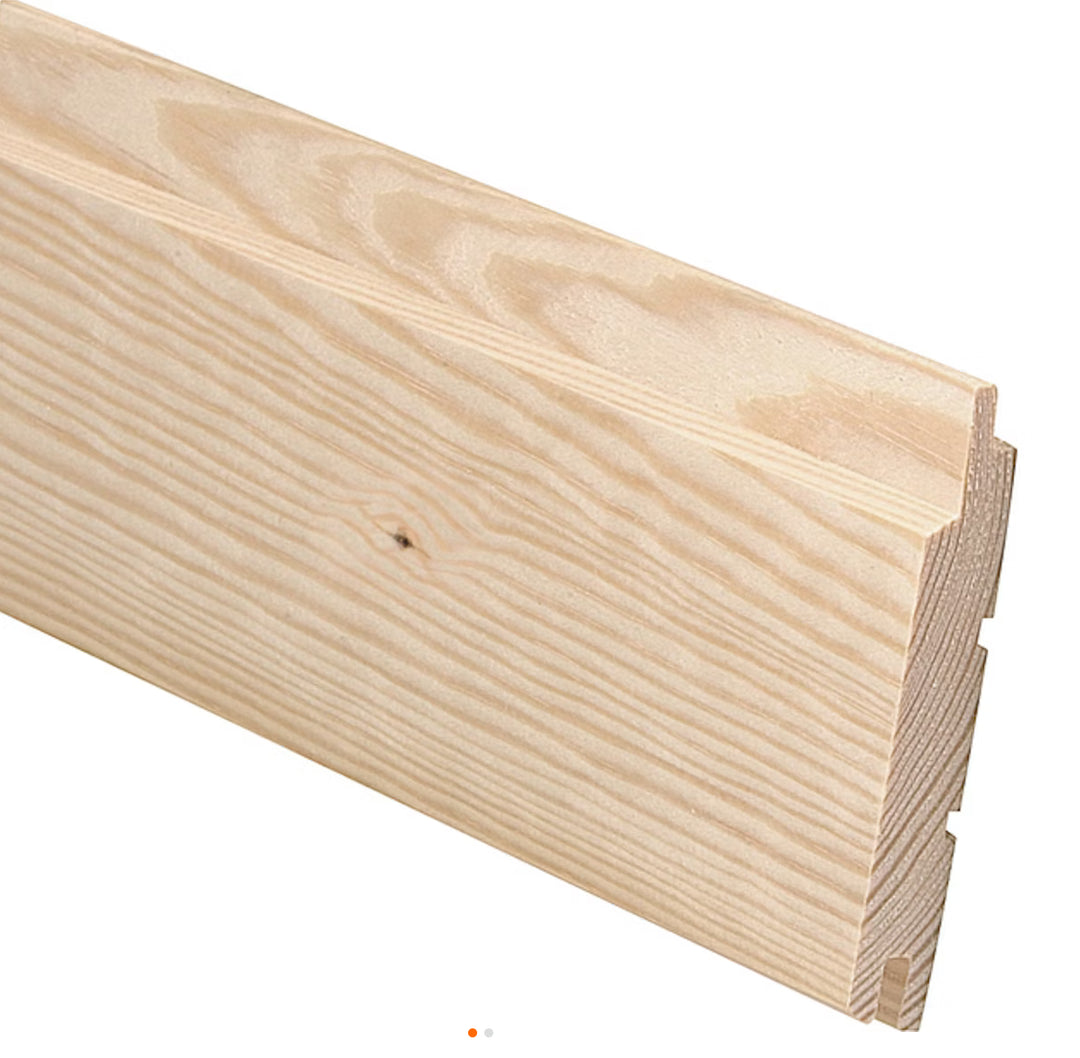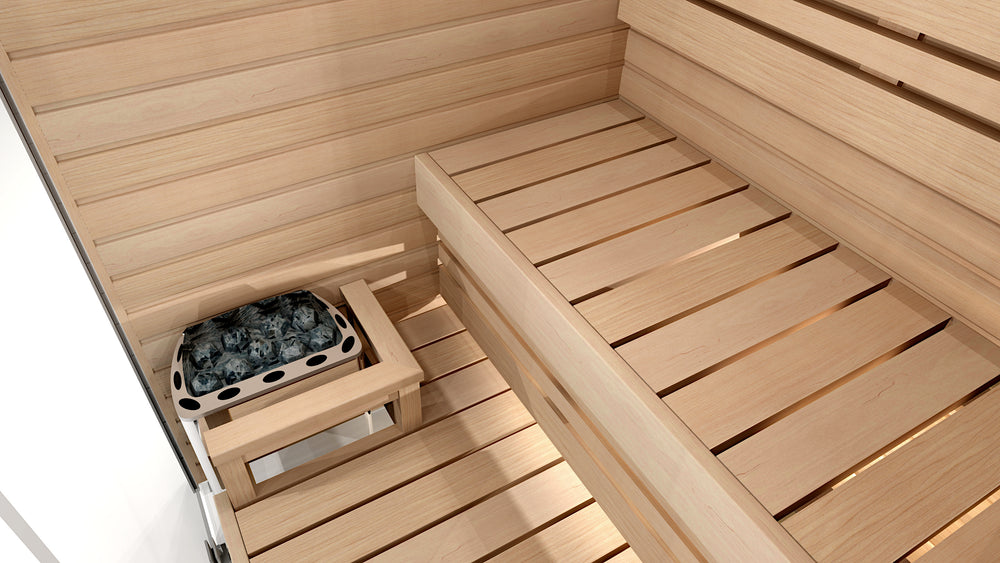Sauna History
Sauna history dates back thousands of years and sauna has been widely known across the northern hemisphere, from the American Indians, to across the wide Russia. In the Arctic region the sauna may have had ritual uses, but likely it was mostly a place for cleaning oneself in the freezing temperatures.
The word Sauna comes from the Finnish language. The tradition of sauna bathing is definitely embedded deepest in the DNA of the Finnish people. Finns hunted, gathered, and farmed in very primitive conditions until the end of 19th century, and on a farm the sauna was the cleanest and most bacteria free place. Thus sauna had many uses, such as a place where food was dried, babies were given birth, corpses were washed, shamans and other doctors tried to cure illnesses, in addition to the normal use of bathing regularly.
The sauna tradition (of bathing regularly) has lived through the millenia, and is very strong today. There is an age old rule in Finland of conduct in sauna: one must behave like if he was in a sacred place. This well describes the unique seriousness by which the Finns relate to their saunas, and will continue this tradition over the future generations.
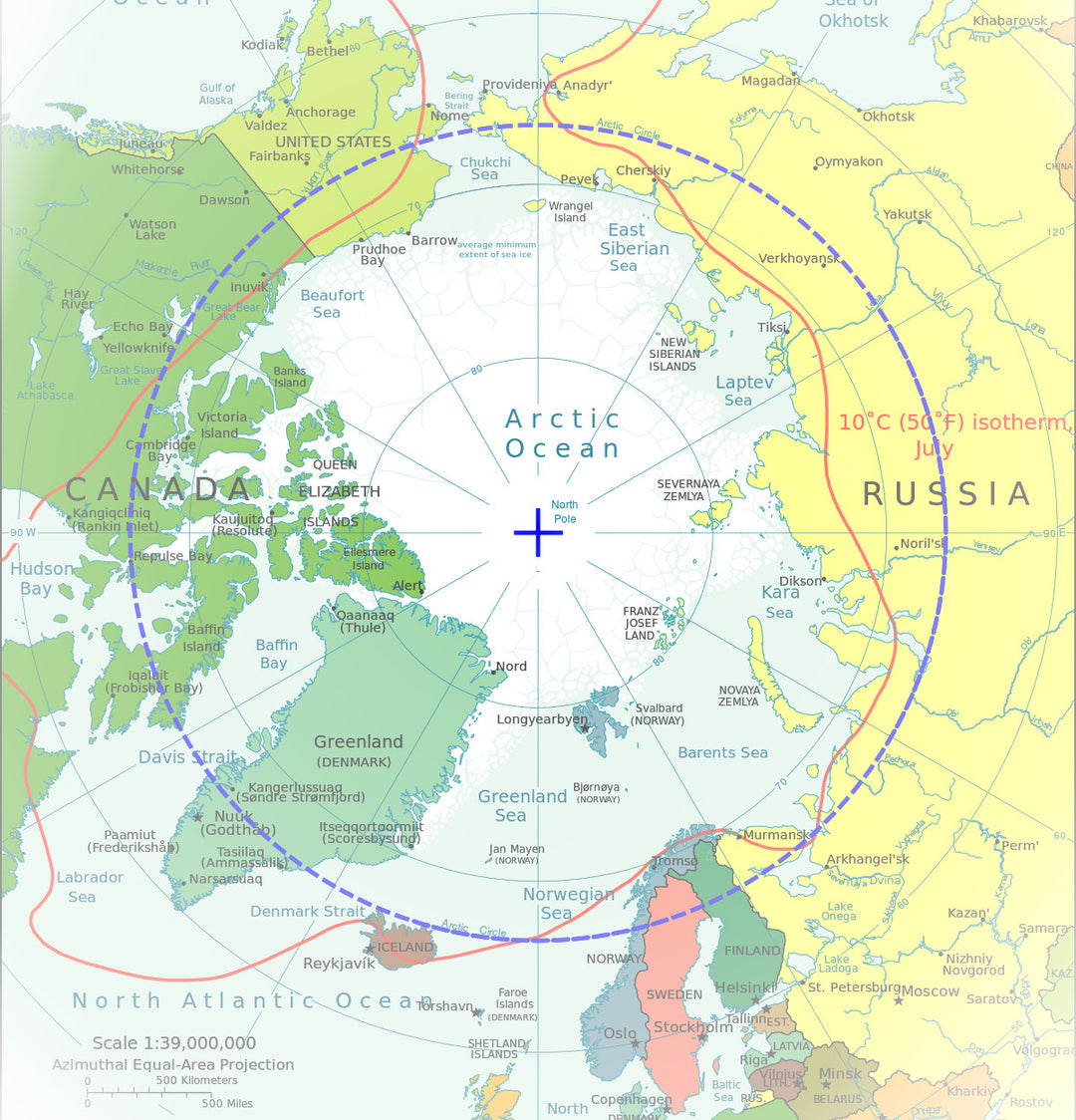
Various sauna types
In Finland there are countless sauna types, from normal to strange, they have been built into boats and vans, skilifts and glass tower offices. There are saunas everywhere in Finland.
Here is the history of sauna development that follows the development of society, from primitive to modern city.
Traditional smoke sauna
The first sauna was a covered pit, quick and easy to make by peoples transferring locations often.
However we can consider the Smoke sauna to be the original form of the sauna, thousands of years old itself, with a simple fireplace that is actually a heap of rocks inside the sauna building, without a smoke stack. The smoke exits from a vent placed near the ceiling of the room. The great mass of rocks is heated and then fire let extinguish before sauna bathing. This is how the sauna used to be, and it was the space most free from bacteria on a farm, as all living things were chased out by the smoke and soot.
Smokesaunas are still being built and actively used, mainly at the summer houses by the shores of tens of thousands of lakes in Finland. Many consider the smoke sauna still to have the best possible sauna bathing experience. A reason for this is definitely the raw simplicity and originality of the carbon and tar scent from the soot and the blackened surfaces, as well as that the sauna room is actually ventilated very well. The sauna has relatively low heat, soft steam, plenty of breathing air, and unique scent of soot, combined with mystical perception of the blackness. And yes, the smoke saunas do burn down frequently, but you can get an insurance for that.
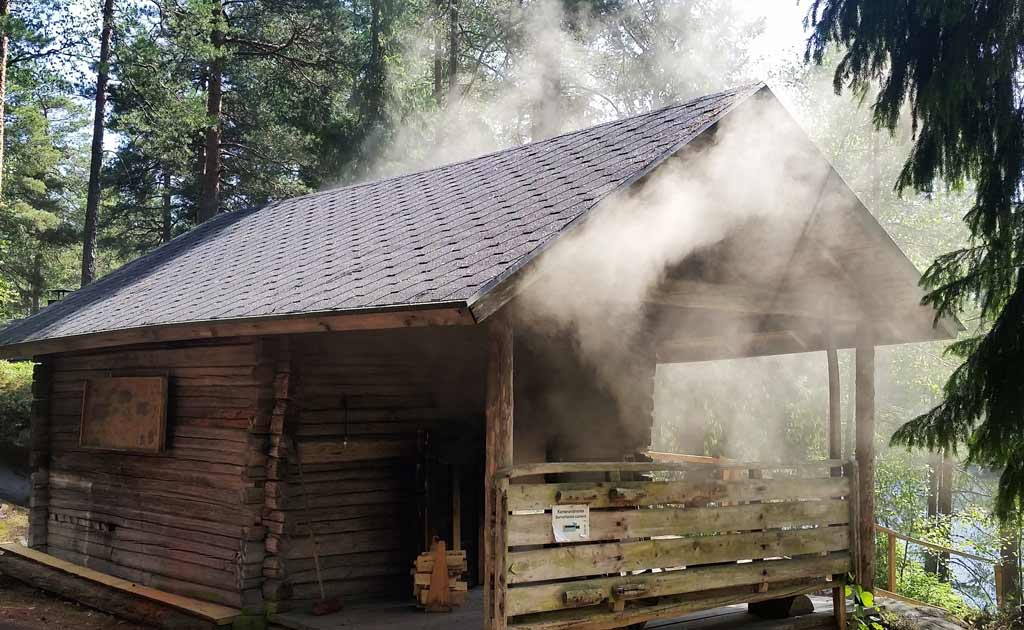
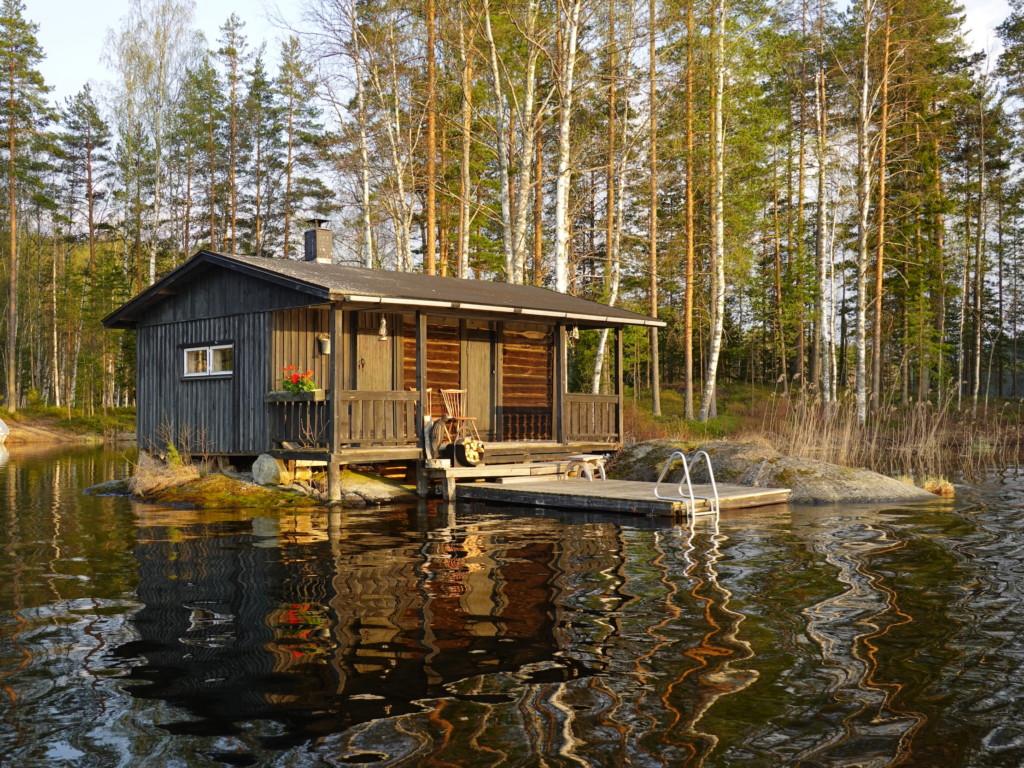
Sauna cabin (summerhouse)
When the chimney became popular it transformed the sauna. In the late 19th century sauna became much easier, safer and faster to heat up, compared to a smoke sauna where the heating was done by a ”sauna master” who had long experience and knowledge of the specific sauna in order not to burn it down. As saunas lasted longer, people were ready to construct them better. Most Finns today have a cottage available to them for summer vacation and weekend use.
There are many kinds of sauna cabins. The sauna can be a very small one with only one sauna room, or a larger cabin that can include the sauna, a washing room, a dressing room and a room with a fireplace and some cooking and temporary sleeping arrangements. The heater is typically a wood burning model with a chimney, and also the water for the washing is heated with wood in a water couldron. Modern conveniences are reaching the summer cabins nowadays. Electricity is available even to the sauna, there can be a pump for well water, water heating systems and a shower. Wood burning heaters are replaced with electrical ones, due to their further convenience.
Detached sauna (modern)
Finland industrialized fairly late, gradually people moved to the cities, later than in most other western countries. This was great for the Sauna culture in Finland, preserving it well. People brought the sauna culture with them to the cities.
A bit over 100 years ago there was rarely running water in buildings, just in center-of-the-town buildings, and most workers and other towns people lived on the outskirts in communals or row house type of dwellings. They had the toilet and the sauna buildings in the backyard. The sauna was heated on every Saturday. That was the weekly national sauna day, the Sauna-Saturday, where the sweat and dirt from the weeks work was washed off. The sauna was wood heated, and was located separately from the living quarters due to fire hazard.
Today to have a separate sauna cabin in the yard is a luxury, not a sign of poverty.
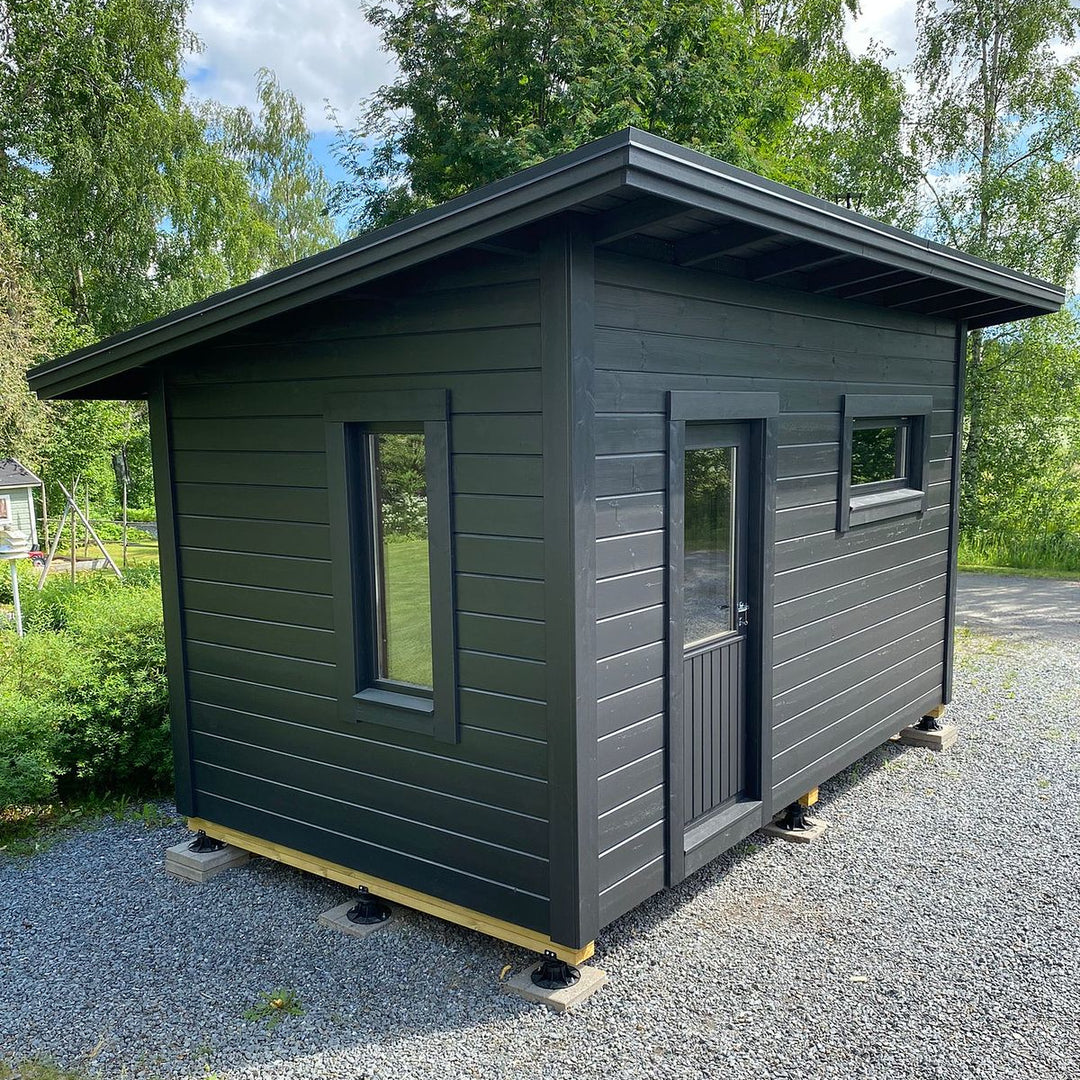
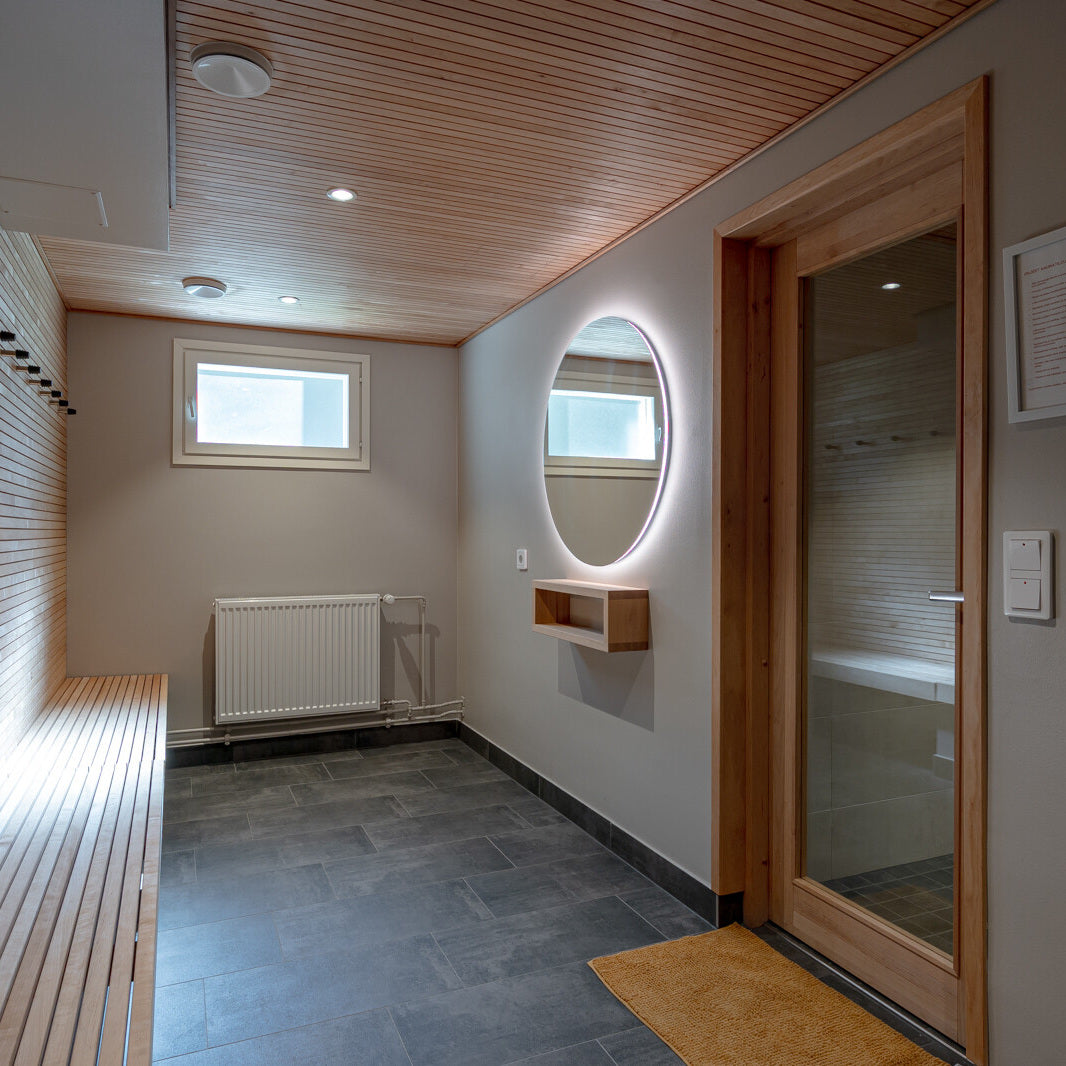
Apartment building common sauna
In those down-town buildings described in the previous paragraph there was often a common sauna in them, located in the basement. The sauna time was divided so that of the building habitants first went all the women together, and after them was the mens' turn. Both had typically two hours sauna time.
Such a gender grouping sauna practice is more common today in camping sites, sports events, yacht clubs etc, where there is only one sauna. Such a common sauna on regular basis with your neighbours very much built the community feeling. It was an event you did not want to miss. This special day was called ”the sauna evening”, when the men could talk it out, same as for the women.
Although such womens' and mens' common sauna times are still in use in some apartment buildings, mostly today the sauna is warm every day of the week, and each family has a reserved time during the week when they can go there privately. It is more convenient for families to go all together, and is also in line with tradition at the countryside and at summer cabins.
Traditional public sauna
Public saunas have virtually dissappeared, only a few remain. Public saunas were popular until the 1960’s, as in many cases they were the only location for ordinary towns people, workers and servants, to take care of their hygiene. Certainly not all people in cities had access to a private sauna, and many backyard saunas had dissappeared due to tighter fire regulations and needs for lots for new construction. Public saunas were relatively inexpensive and thus commonly used by the lower classes of the society. There was possibly a person to wash sauna bathers backs, but never any sexual implication.
Today public saunas still have the open-house hours, but they also offer private reservations. There are public saunas today found mostly at public swimming pools, this is where the remnants of this tradition continue. Public saunas are great equalizers of societal classes, as you may be sitting naked next to a corporate executive or a taxi driver, without any difference. Discussion topics in such saunas are typically very neutral, nor political, avoiding revealing one’s background.
Kotiharjun sauna -a real public sauna.
Rajaportin sauna a traditional sauna in Tampere
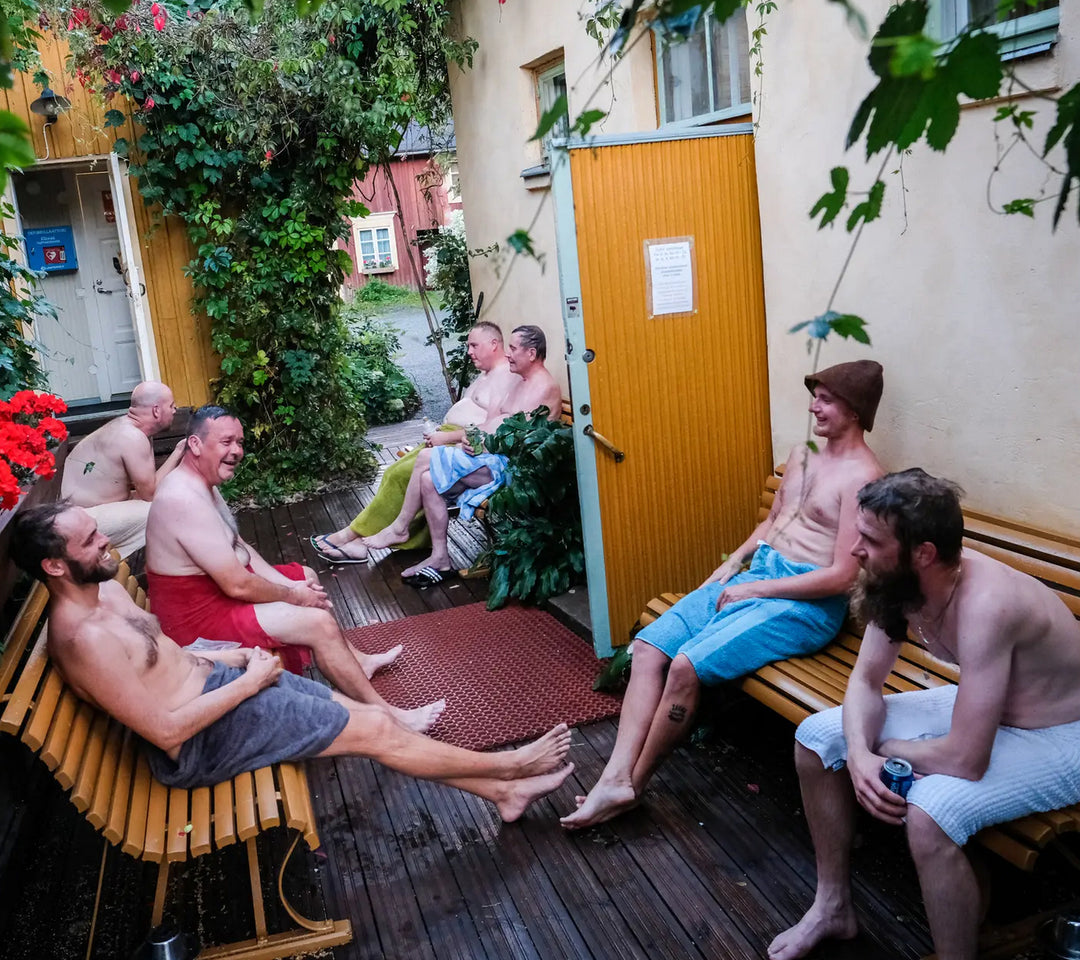
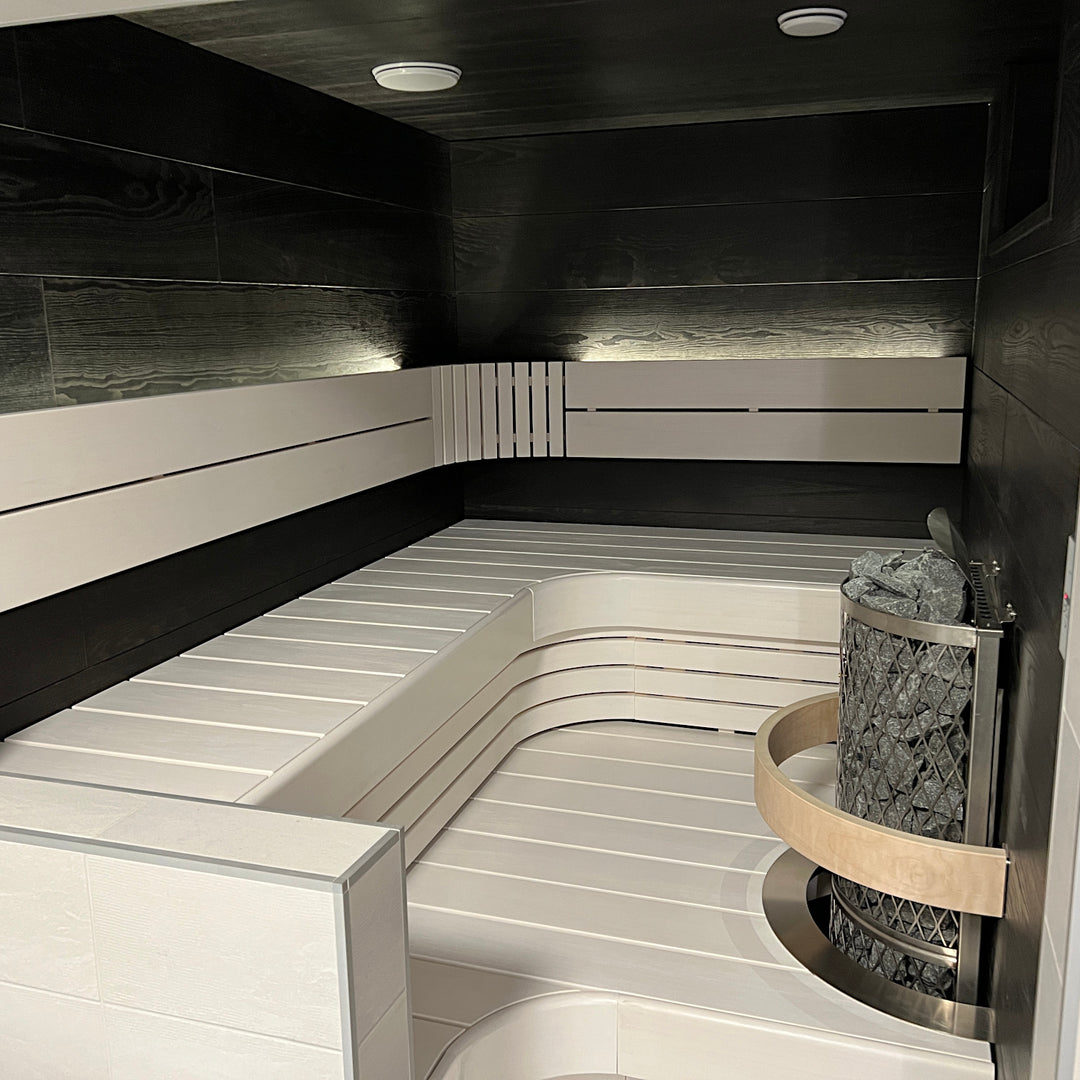
Apartment sauna
Virtually every flat, apartment, rowhouse or house in Finland, no matter how small, has its own sauna. This change was gradual and prevalent from the 1980’s onwards as living standards improved. However the sauna bathing quality did take a step back, as the sauna heaters for these relatively small 2-3 person saunas were and still are quite small in size with a limited capacity of rocks that store the heat. The small heater is working hard heating the sauna, and overall the steam quality is not great. Also ventilation was poorly designed and constructed, either not working well or being too strong.
Today in modern apartments all this has developed significantly. Designers calculate carefully the capacity of air to be ventilated, the heaters have become larger and house more stones, and also people prefer to bathe in a lower temperature, 70-80 degrees Celsius, thus making the sauna air more moist and closer to the original For many people having their own sauna is a great comfort. Sauna bathing is no longer related to providing personal hygiene, but it is about relaxing, enjoying the sauna steam and health benefits. Taking a sauna after a jog or other exercise, after coming home from work, or having some friends over, is a normal everyday way of life.
Pre-built bathroom sauna
Relatively recently, only a few decades ago, were developed and introduced pre-built indoor saunas. In Finland where the Sauna is such an old tradition, such new innovations have taken time to find their acceptance. However such saunas are a fabulous way to bring the sauna to more people. Such a sauna can be very small in size, fitting only one person at a time, but therefore it can be placed into the corner of any bathroom or to replace a bathtub. Thus apartments that did not have a sauna, or old houses that had a sauna cabin in the yard, can have an indoor sauna.
A pre-built sauna, even a small one, has all the features of a larger sauna, the sauna bathing quality and functionality is without compromises. This is due to the small saunas being well designed to be balanced, in heater power, interior space, ventilation etc.
Most customers outside of Finland who are looking for a sauna find the easiest solution in a pre-built sauna. Sauna has become very popular all over the world. A pre-built sauna is the easiest way of aquiring a true sauna, as this structure has made the sauna into a product that can be shipped anywhere.
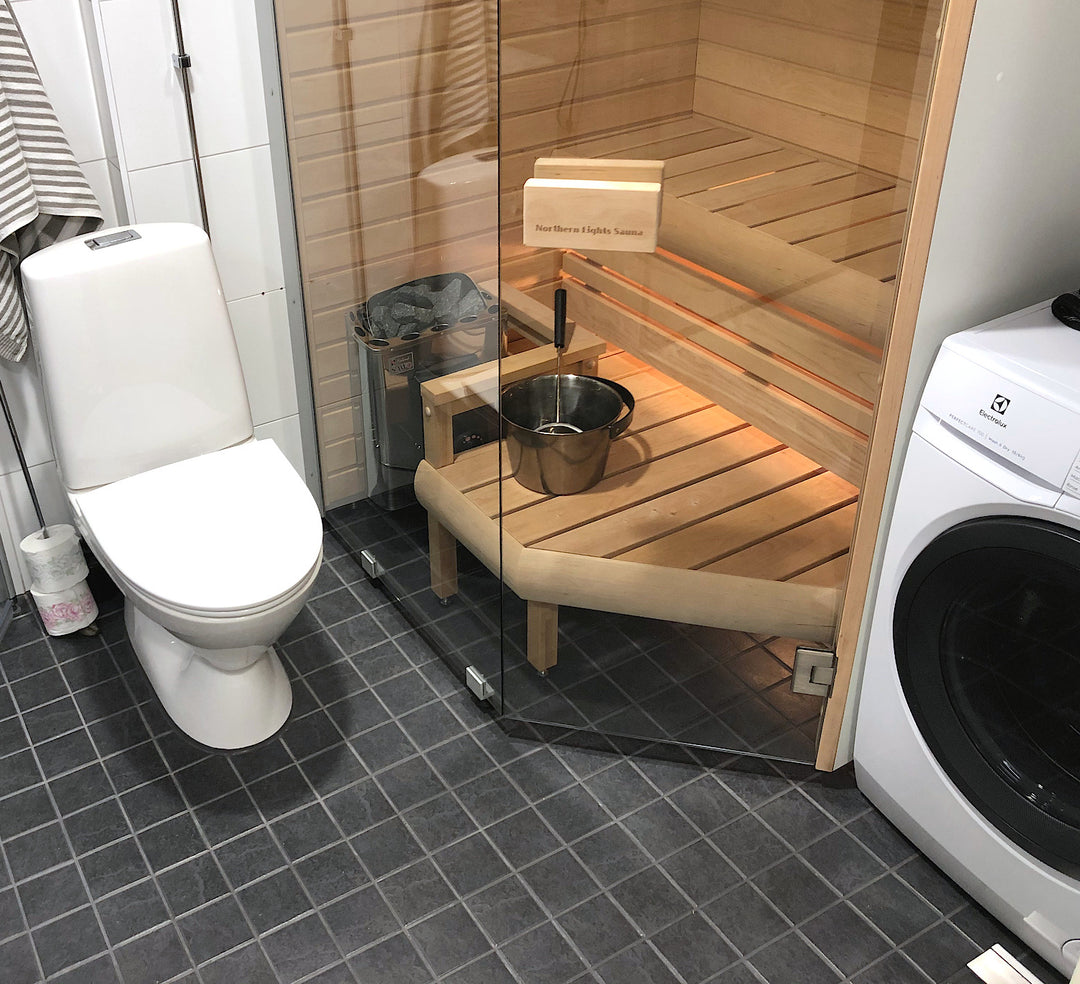
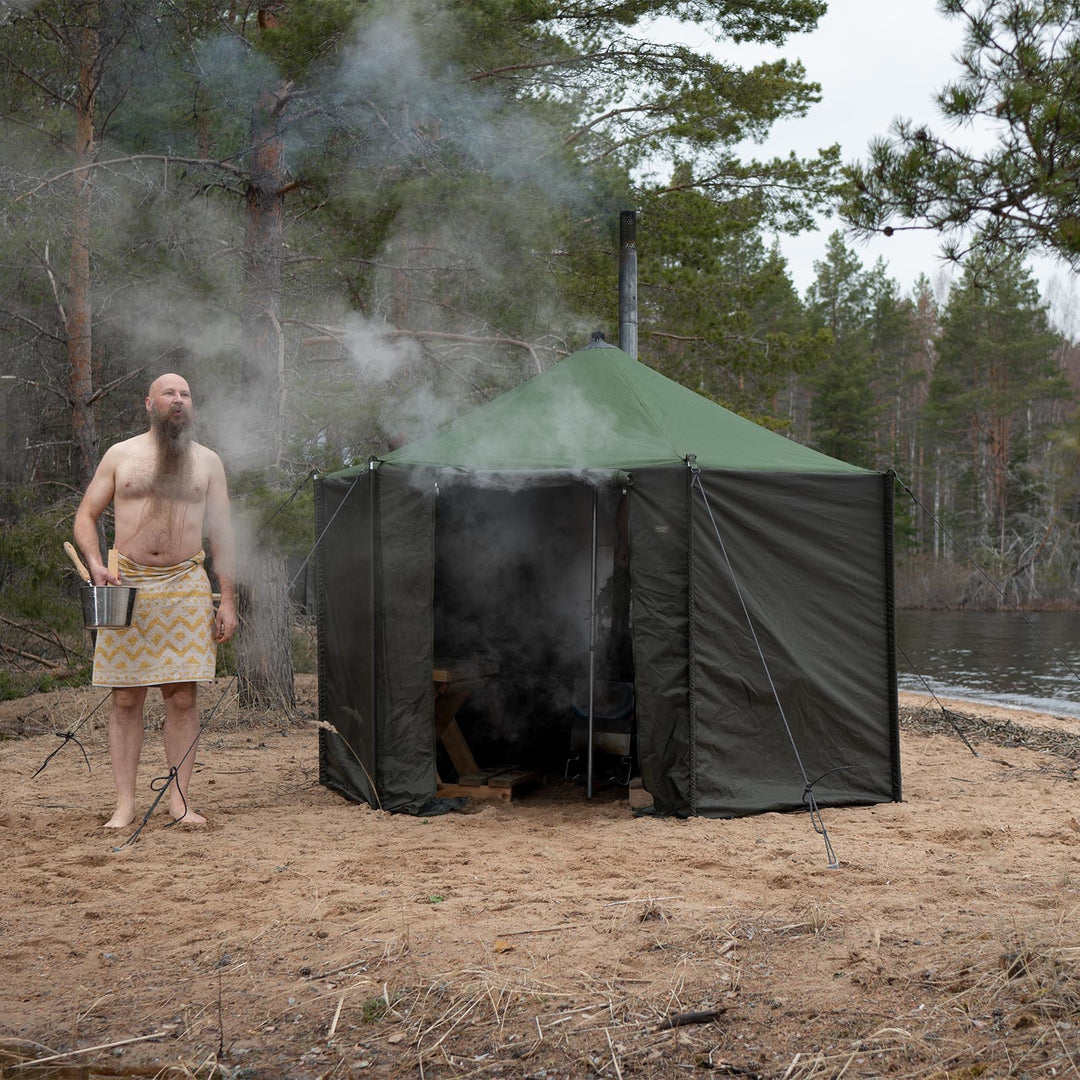
Tent sauna
Finally, we will not forget this sauna. Organizations such as the Finnish Army, the Red Cross and the Scouts use tent saunas. Such a sauna can be transported easily as it typically weighs only some tens of kilograms, can be erected quickly, and typically has a wood burning heater. The heater is light, has only a few stones. The saunabenches are not very sturdy, and fit only a couple of persons at a time. The heat is not very intense and steam evaporates quickly.
However the sensation is excellent to be able to go to a sauna, to sooth your muscles and feet after a long day of activities.
There are thousands of different types of saunas in Finland. Actually, there are 2-3 million saunas in Finland, a country of 5,5 million people. There are more saunas than personal cars. And each single one of them is different from the next, one way or the other.
Wood types used in sauna
Traditionally, the wood types used in saunas were Spruce and Aspen, but in recent decades many other types have become popular. Especially wood types other than conifer trees.
Alder
The Black Alder (Alnus glutinosa) is a fine saunawood. It has a uniform texture with a reddish color giving it a high quality rich look. It has really become the standard sauna material for exclusive public saunas and luxurious home saunas. The scent is enjoyable and sweet. Black Alder is noted for its ability to withstand decay under moist conditions, making it ideal for Sauna use. Alder grows in abundance in Europe. Already centuries ago it was used in Venice and Amsterdam as foundation pillars for buildings.
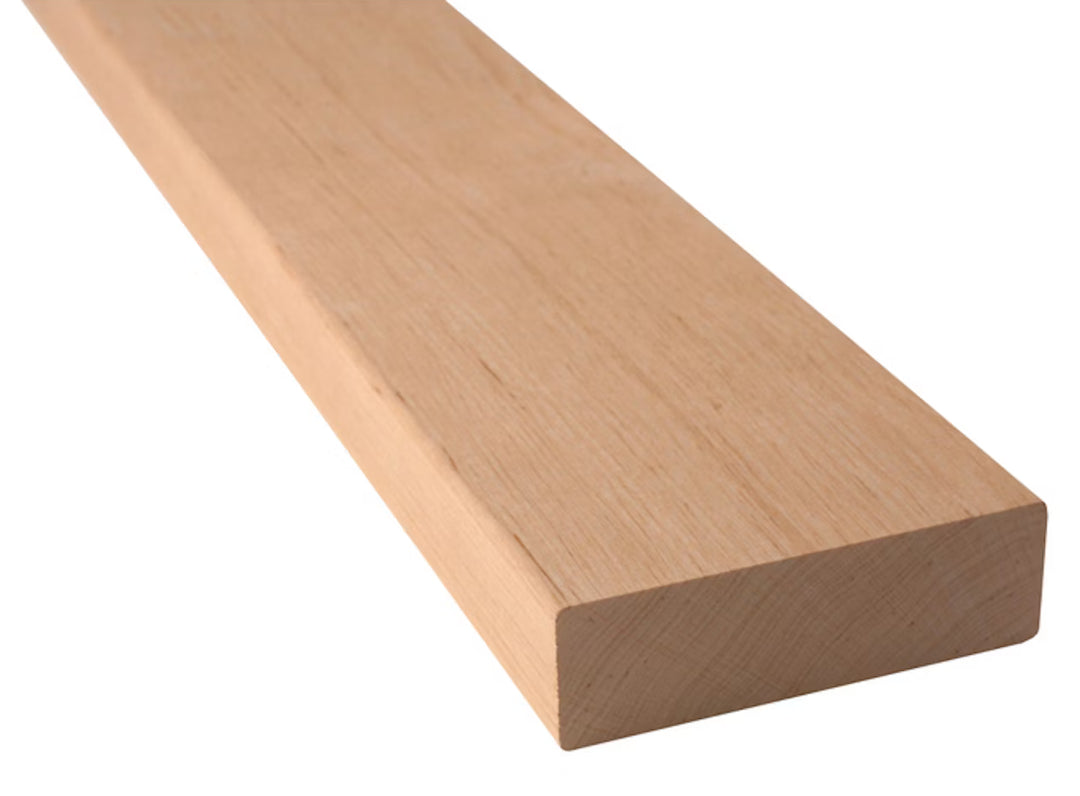
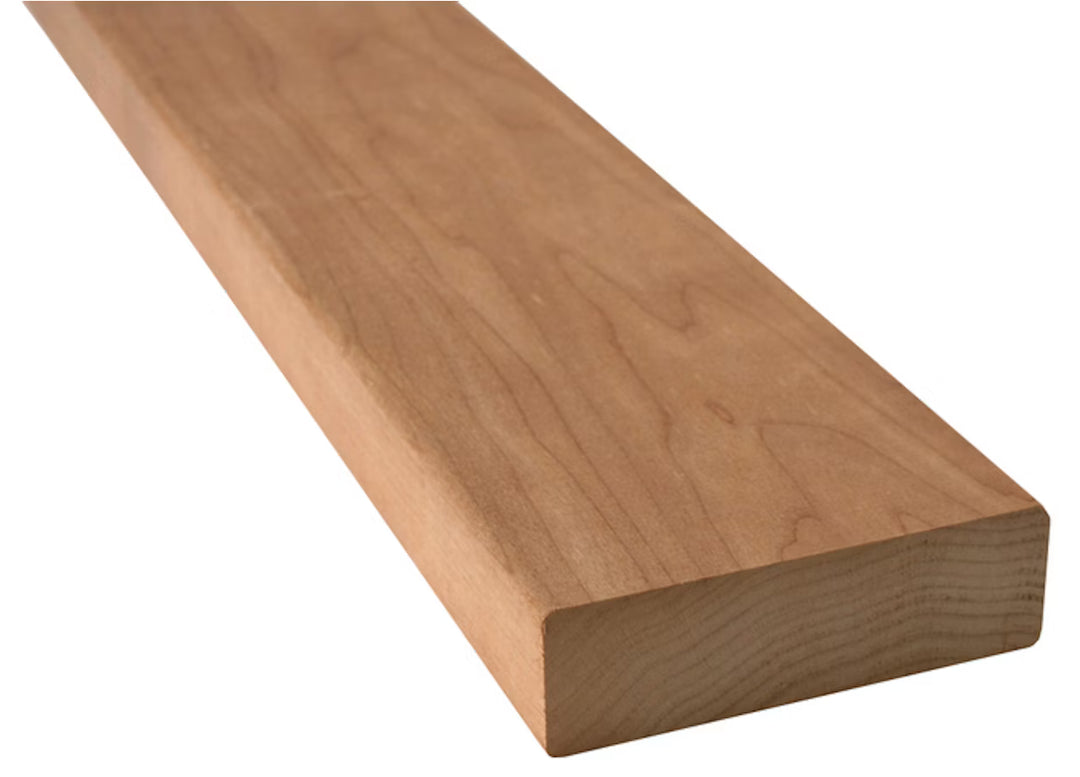
Heat Treated Wood
Heat treatment can greatly enhance many good qualities of certain wood types and lessen the effects of poor features. Aspen wood is a great example. As heat treated, its color is light brown, it has a faintly smoky scent. It's not so prone to show marks of use and coloration and it is very soft and pleasant to the touch in a hot sauna. Therefore it has become very popular as a saunabench material. Other wood types that are possible to heat treat are black alder and pine.
Aspen
Aspen is favoured for the very even and very white colour, for being a soft wood, because these are qualities very suited to the sauna. It’s good looking when new, but may age quite soon: the white soft wood is susceptible to coloration from use, and also from mildew. Therefore we don't recommend it, but if you can accept these negative features, aspen is an excellent material for sauna. It has virtually no scent, and is found in great abundance all over the northern hemisphere.
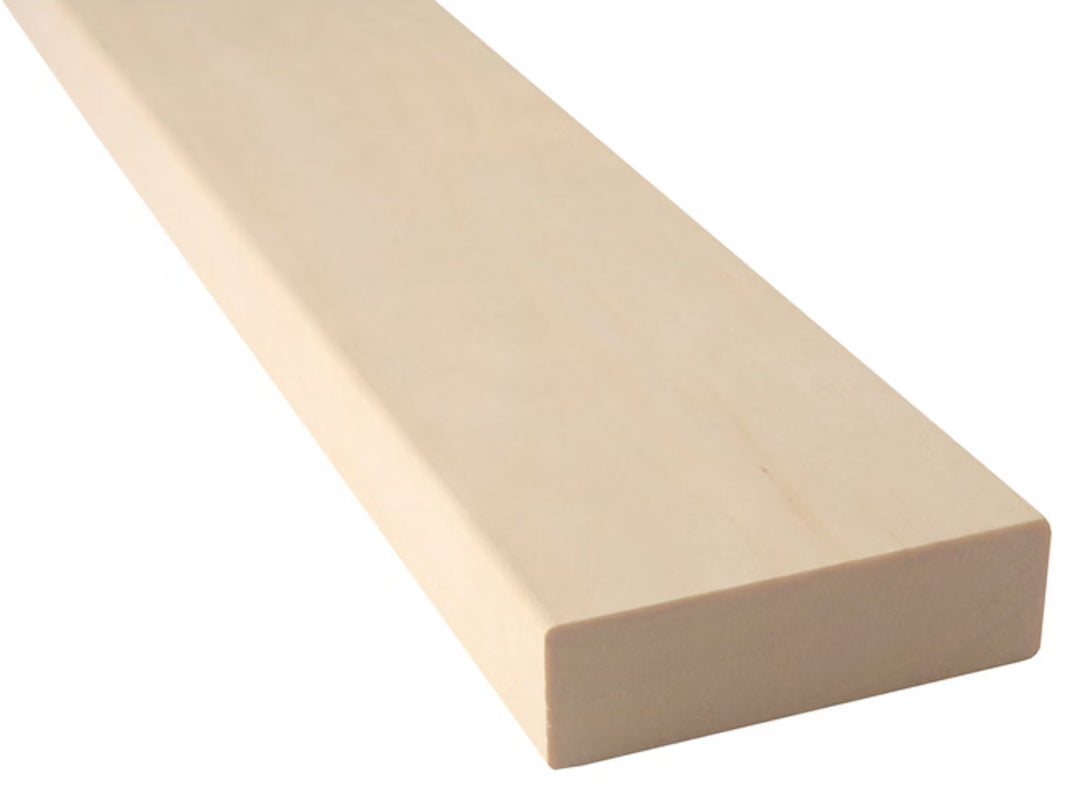
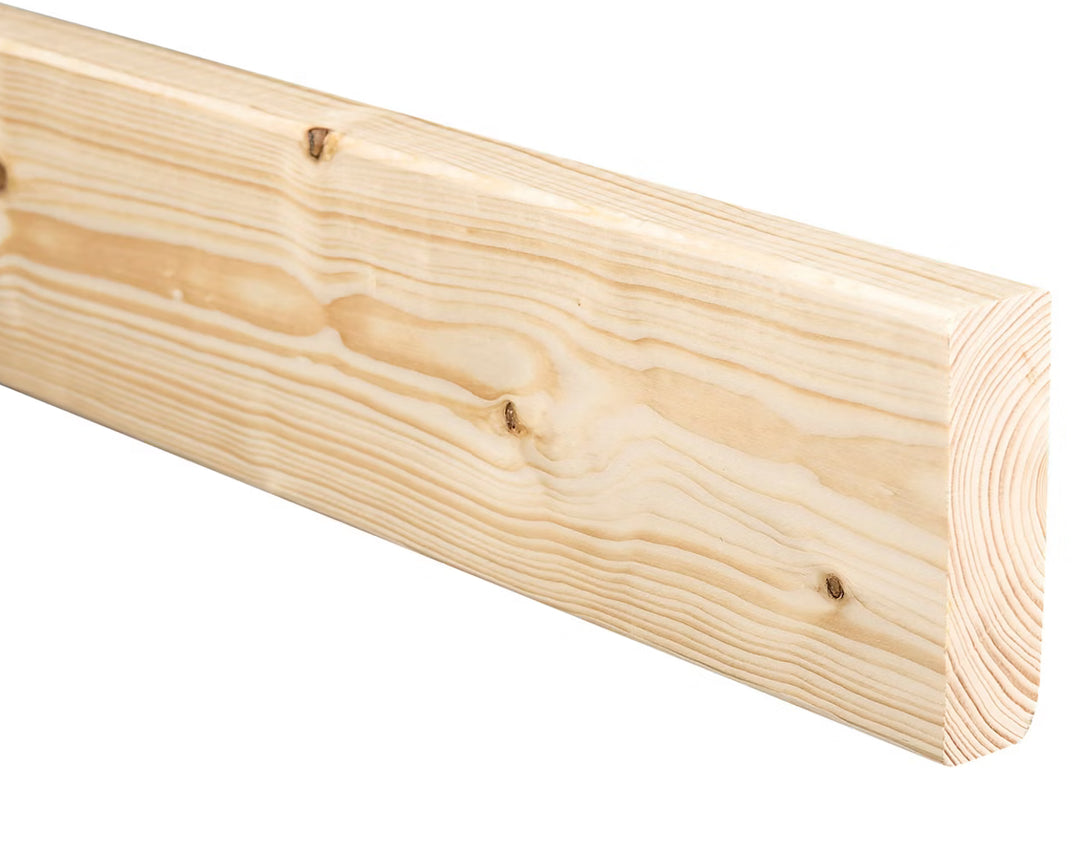
Nordic White Spruce
Nordic Spruce (Picea abies) is a light colored wood growing in abundance in the northern hemisphere. It has a fresh scent and a pleasant light color, and it is a fairly soft wood and thus pleasant to the touch in sauna. It is and for a long time has been the most popular wood material for saunas. The quality of the wood used in saunas is the highest A-grade, which means also that there are very few knots on the wood. This wood is harvested from the commercially grown forests in Finland where the forestry is tightly regulated and controlled. Nordic Spruce has been classified by the IUCN Red List of Threatened Species as being at the ”least concern” level.
Nordic pine
The Nordic Pine (Pinus silvestris) is a light colored wood. It has a special very original mild scent that is perhaps a bit sweeter than spruce. Typically in a sauna only knotless pine material is sought to be used, as the resin oozes especially from the knots. Therefore pine is not used on the benches. Over time the wood will turn to a yellowish colour and the wood texture becomes more pronounced. Pine is grown in great extents in the commercially grown forests in Finland. Pine has regained its popularity as a sauna wood after heat treated pine was brought to market. It has been classified by the IUCN similarly as the spruce.
